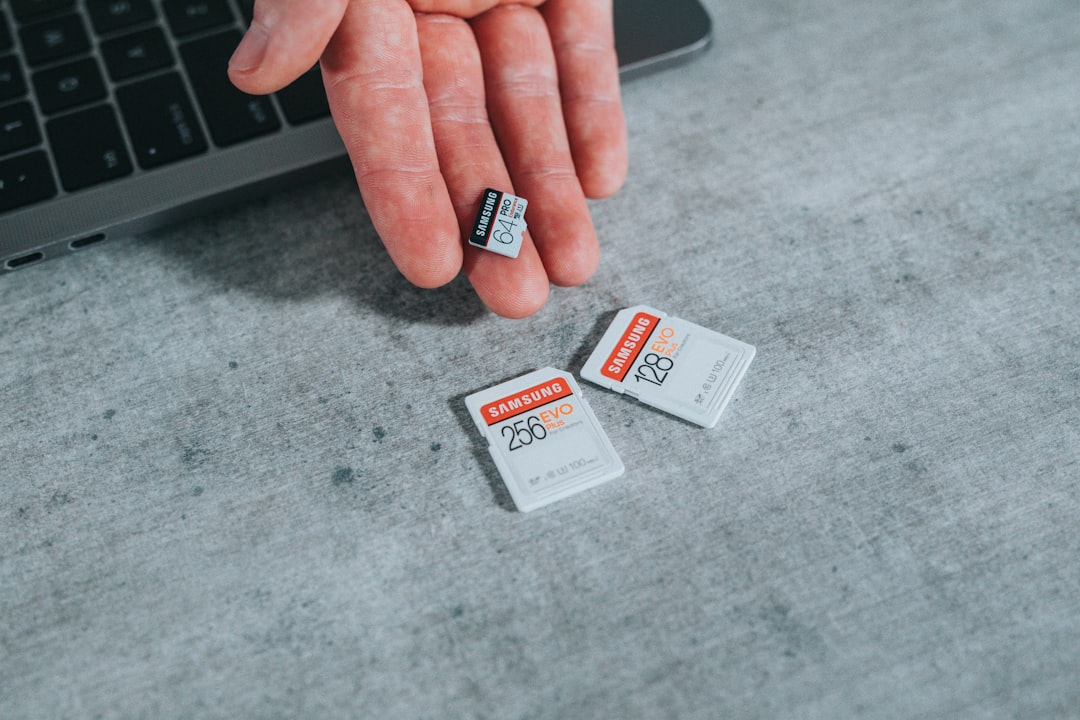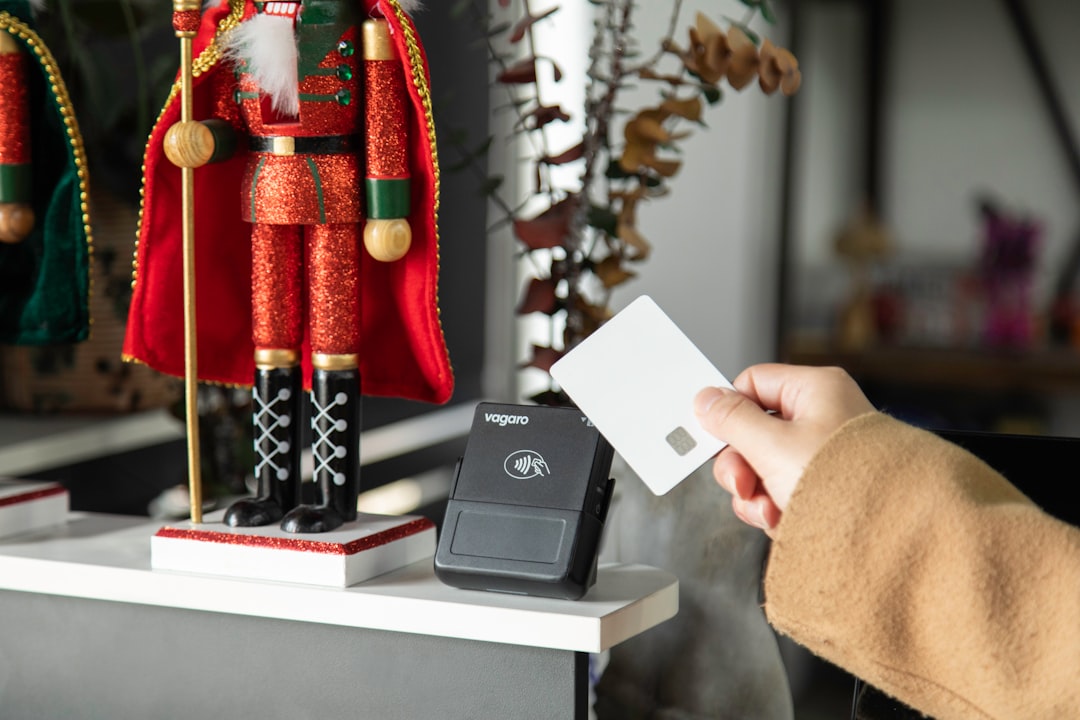

Engage prospects with a scan and streamline customer engagement with FREE QR code marketing tools by Sona – no strings attached!
Create a Free QR CodeFree consultation

No commitment

Engage prospects with a scan and streamline customer engagement with FREE QR code marketing tools by Sona – no strings attached!
Create a Free QR CodeFree consultation

No commitment
Card access system providers face ongoing challenges in managing friction points, such as distributing keycards, overseeing access permissions, and balancing security with convenience. Leaders must address the frustration of tracking high-value prospects who show interest but never formally register, all while gaining more visibility into anonymous users who interact with facilities but do not end up in the CRM. As access control systems advance, there is a growing demand for solutions that streamline management, tackle security risks, and bridge offline gaps that result in missed opportunities and inefficient manual processes.
Traditional methods of controlling facility access, such as physical keycards, visitor badges, and handwritten registration logs, often leave providers unsure about who is truly interacting with their environments. This exposes organizations to unauthorized entry and allows important engagement signals to go untracked, leading to missed demo interests or at-risk accounts. Mobile and QR code-enabled access systems address these problems by offering real-time monitoring and instant entry, improving operational intelligence and reducing inefficiencies tied to outdated workflows.
This guide delivers best practices, timely trends, and proven strategies for using QR codes to maximize both the access experience and business outcomes. Learn how to uncover access patterns, prevent missed opportunities, and build a smarter, more responsive security infrastructure. You will see how to replace analog bottlenecks, connect physical entry events to digital systems, and transform every scan into a measurable signal for security and growth.

Manual processes create bottlenecks for both operations and the end user. Many providers struggle with the problem of losing track of who is coming through which entry point, especially when visitors or staff bypass formal check-in steps, resulting in incomplete access logs and untraceable activity. These gaps create risk, slow down throughput, and disconnect the physical experience from the digital record of what actually happened. See how to improve visitor visibility with Sona on account identification.
QR codes offer a concrete path forward. When integrated into modern access platforms, they simplify credential distribution, compress onboarding time, and give you an audit-ready trail without requiring an app download. They also let you update permissions in real time, which means you can adjust access policies at the speed of business instead of waiting on plastic cards, printer queues, or manual list updates. Start creating QR codes for free.
By addressing the persistent pain of unknown or unmonitored traffic at every step, QR code solutions transform each doorway into a point of actionable insight and security reinforcement. The result is a smoother experience for guests and staff, higher confidence for security teams, and richer data for operations and revenue leaders who want to turn physical interactions into measurable outcomes.

Relying on traditional card systems or manual logs frequently results in lost opportunities. Qualified visitors may never appear in system records, and anonymous traffic cannot be identified as a prospect or a potential threat. This lack of visibility hampers efforts to convert high-intent leads, enforce compliance, and demonstrate security to stakeholders. It also forces teams to make decisions with partial information, which is costly when compliance audits or incident investigations arise. For bridging physical-to-digital touchpoints, see Sona’s perspective on offline attribution.
QR codes resolve these gaps by making every access moment both identifiable and actionable. With one scan, you can authenticate a person, capture consent, log the event with context, and direct the individual into the right digital journey, such as a demo booking page, a safety briefing, or a contractor handoff checklist. The simplicity of scanning with the device in someone’s pocket shortens lines, reduces support tickets, and raises the bar for audit-quality records.
For high-stakes environments like enterprise offices, hospitals, and data centers, these features turn everyday entry points into opportunities for threat reduction, lead nurturing, and proactive engagement. You get the dual benefit of stronger physical security and a more complete view of who is interacting with your organization.

Widespread use of static keycards or one-size-fits-all codes can leave providers unable to distinguish between legitimate engagement and high-risk activity. Flexible QR code formats provide the control, flexibility, and trackability needed to tailor access for different roles, durations, and compliance requirements. Choosing the right format ensures that every scan triggers the right workflow and produces useful data.
Dynamic formats are especially valuable in access control because they allow you to update destinations, permissions, and messages after printing. If a policy changes or a construction zone moves, you can update the QR’s behavior centrally without swapping signage or reissuing printed materials.
Dynamic QR solutions stand out by allowing permissions or usage context to update in real time. They reduce the administrative burden of reprinting and improve situational readiness when policies must change quickly due to incidents, drills, or evolving regulations.
Many providers lose growth momentum by failing to identify and capture high-intent traffic at overlooked physical or digital touchpoints. When walk-in demos, site tours, or partner visits do not sync with CRM, you miss the chance to nurture interest or escalate risk. A thoughtful QR deployment strategy surfaces these interactions and routes them into the workflows that drive value.
Focus on placements where scanning is easy, context is clear, and the next step is obvious. In each location, align the QR call to action with a measurable business outcome, such as scheduling a demo, acknowledging safety procedures, or requesting a service upgrade.
Identifying these high-value moments and ensuring every interaction is tracked not only improves operational ROI but also turns access points into forward-looking revenue and relationship drivers. When the physical environment and your digital systems share context, conversion and retention both improve.

A persistent pain for access control teams is missing, incomplete, or unverified entry records, which leads to lost demo interest, missed follow-ups, or even security incidents. QR-enhanced workflows solve this by tying every scan to a person, a purpose, and an outcome. They also help you prove compliance and accountability with a clear chain of events.
Focus on use cases that address both security and business goals. The best deployments minimize manual steps, shorten wait times, and enrich your CRM with useful context that sales, support, and operations can act on.
Providers that close the gap between intent and follow-up with these applications report faster cycle times, higher data integrity, smoother audits, and better conversion of high-value interactions into meetings, pilots, and renewals.
Card access events are often overlooked as sources of actionable sales or support signals, especially when the interaction remains anonymous or unsegmented in the CRM. When each scan is linked to a person, role, location, and intent, you unlock audience building that reflects real behavior rather than guesswork. This improves the relevance of outreach and the efficiency of your funnel.
Segmenting by use case and context is crucial. A prospective customer scanning at a demo room after a roadmap session deserves very different follow-up from a contractor scanning into a loading dock. The more precise your tagging, the more useful your audiences become for nurturing, renewal plays, and risk alerts.
Solutions like Sona QR make this easy by treating each code as a smart entry point. With role-level tagging and automated syncing, you can deploy precise follow-ups that reflect exactly how someone engaged with your space and your team. Browse the Sona QR use cases to plan deployments.
Many access system providers fail to align messaging across physical facilities, digital campaigns, and post-visit communications. This leads to a fractured experience and missed opportunities for conversion or expansion. QR codes act as the connective tissue across channels, pairing on-site interactions with downstream content and sales motions.
To get the full benefit, plan QR content and destinations alongside your campaign calendar. A scan at a lobby kiosk should feed the same nurture track as a scan from a direct mailer, provided both reflect the same use case. Consistency in message, offer, and next step drives higher engagement and cleaner attribution.
A unified QR management platform ensures no touchpoint remains siloed. By centralizing code creation, routing, analytics, and integrations, you turn disconnected moments into a cohesive, data-rich engagement ecosystem that supports both pipeline and retention.
Disconnected or ad hoc QR deployments often lead to inconsistent data, security gaps, or subpar user experiences. A methodical approach helps you launch fast without sacrificing control or insight. Treat every deployment as an iterative program that you will refine based on real-world usage.
The following steps align to the lifecycle most access providers follow when they modernize. Use them to pilot a focused use case, measure results, and scale with confidence across locations and audiences.
By addressing potential breakdowns at every stage, providers can turn each campaign into a self-improving loop. Start focused, gather evidence, and scale with confidence while maintaining security posture and a consistent user experience.

A major challenge for card access system providers is tying physical access behavior directly to downstream business metrics. Without that connection, you cannot prove how tours, demos, or training sessions influenced pipeline or renewal. You also miss alerts that could signal a security risk or a customer at churn risk. Robust QR analytics fix the disconnect by linking scans to identities, intent, and outcomes.
Modern platforms capture the full context of each scan and stream it into your systems of record. This lets you attribute value to physical interactions, trigger automations based on behavior, and show stakeholders how investments in access modernization produce measurable returns.
Intelligent tracking platforms make it possible to surface these links in real time. Sona QR captures scan behavior across placements, and Sona.com connects those events to buyer journeys and revenue attribution so your team can move from anecdote to evidence. Explore the Sona QR use cases to map scans to business outcomes.
Even strong QR programs can stall if messaging is inconsistent, staff are unclear on the value, or analytics are not used to drive change. Sustainable success comes from treating QR as a core capability, not a side project. This means consistent design standards, shared dashboards, and cross-functional ownership between security, operations, and go-to-market teams.
Choose the tactics that best match your environment and tooling. Prioritize clarity in what users get when they scan, and automate as many follow-ups as possible so no signal goes to waste.
Creative example: Place QR codes on temporary event badges that auto-expire at midnight, tag scans to session attendance, and route highly engaged visitors into a post-event demo series. Another example is adding QR codes to service invoices for on-site work at client facilities, which lead to a satisfaction survey and a cross-sell of mobile credentials, turning a back-office document into a revenue touchpoint. Build surveys quickly with this Google Forms QR guide.
Providers who struggle with untracked visitors, unreliable manual records, or missed moments of engagement can use QR-enabled access to turn these liabilities into advantages. By embedding QR codes throughout facility workflows and ensuring every scan is logged and actionable, you gain the visibility needed to nurture opportunities, reduce risk, and prove compliance. The result is a security program that is both more resilient and more aligned with business growth.
A connected QR strategy enables card access system providers to streamline credentialing, unify physical and digital touchpoints, and illuminate buyer intent hidden inside the facility. When the same scan that opens a door also updates your CRM or kicks off a training module, your teams move faster and make better decisions.
As physical and digital security converge, a data-rich QR program positions you to meet rising expectations for safety, privacy, and convenience. With platforms like Sona QR for code management and Sona.com for attribution and buyer journey visibility, you can capture demand at the source and connect scans to revenue. The future of access is smart, integrated, and always one scan ahead.
QR codes have revolutionized the card access system providers industry by enabling seamless, secure, and efficient access management. Beyond simplifying entry protocols, QR codes enhance customer experiences by offering quick, contactless access while providing providers with real-time data to optimize security and operational workflows. Imagine instantly knowing which access points are most used, detecting unauthorized attempts, and swiftly updating credentials without cumbersome hardware changes.
With Sona QR, you can effortlessly create dynamic, trackable QR codes that adapt on the fly, giving you full control over access permissions and detailed insights into usage patterns. This empowers you to boost customer satisfaction, improve security measures, and streamline administration—all from a single platform. Start for free with Sona QR today and transform your card access systems into smart, data-driven gateways that drive both trust and efficiency.
QR codes simplify credential distribution, reduce onboarding time, enable real-time permission updates, improve audit trails, enhance visitor visibility, and lower operating costs compared to traditional methods.
Users scan individual, trackable QR codes bound to their identity or role to gain access, with systems capturing real-time data on each scan, updating permissions dynamically, and linking physical entry events to digital records.
Look for platforms that generate dynamic QR codes, provide instant revocation, policy-based approvals, real-time compliance reporting, forensic logging, and seamless integration with CRM and security systems.
Pros include frictionless, app-free access, improved data accuracy, real-time control, and cost savings; cons can involve the need for proper placement, user education, and consistent analytics to avoid security gaps.
Integrate by selecting a QR platform that supports dynamic codes, syncs with CRM and HR systems, combines scan data with surveillance or compliance dashboards, and aligns QR deployments with marketing and operational workflows.
Use Sona QR's trackable codes to improve customer acquisition and engagement today.
Create Your FREE Trackable QR Code in SecondsJoin results-focused teams combining Sona Platform automation with advanced Google Ads strategies to scale lead generation

Connect your existing CRM

Free Account Enrichment

No setup fees
No commitment required

Free consultation

Get a custom Google Ads roadmap for your business






Launch campaigns that generate qualified leads in 30 days or less.
